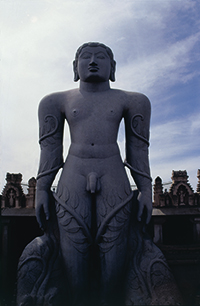About Sravanabelagola Information
Sravanabelagola, literally meaning the ’Monk of the White Pond’ is one of the oldest and most important Jain Pilgrim centres in the country. Its antiquity dates back to 297 B.C., when Chandragupta Maurya, the founder of the Mauryan Empire renounced his guru, Bhagwan Bhadrabahu Swami, to become a Jain ascetic. He led a recluse life and breathed his last at the Chandragiri hill, which is named after him.
For members of the peace-loving, nonviolent Jain faith, this is one of the oldest and most important pilgrimage centers, famous for its colossal 18m (60-ft.) statue of Lord Gomateswara, said to be the tallest monolithic statue on earth, reached by climbing the 635 steps that lead to the hill’s summit. Naked and imposing, the statue is a symbolic representation of worldly renunciation. Commissioned in A.D. 981, the Statue of Gomateswara is a representation of Bahubali. Son of the first Jain Tirthankara, Bahubali renounced his kingdom and sought enlightenment by standing naked and motionless for an entire year while contemplating the meaning of life. Seen in detail on the legs of the statue, the creepers and plants twisting their way up his body are symbolic of his motionless mission of spiritual discovery. A special celebration is held here every 12 years, when the giant monolith is bathed with bucketfuls of milk and honey and other condiments. The next ceremony takes place in 2017.
Gomteshwara Temple
The temple atop the 470ft high Indragiri hill is dedicated to Lord Gomteshwara or Bahubali, the younger son of Jain emperor and the first Jain tirthankra, Virshaba Deva (Adinath). It is world renowned for the 58 feet and 8 inches tall sculpture of the Jain sage Gomateswara, which is regarded as the tallest monolith in Asia. The splendidly sculpted monolith is set in the middle of the temple courtyard encircled by a gallery enshrining the images of various Jain tirthankars. It was carved out of a single block of granite by sculptor Aristenemi in 981Ad and installed in 983AD by Chamundaraya, a powerful minister of Ganga king, Rajamalla IV. The statue stands uprightin the posture of meditation known as Kayotsarga, indicating perfect self control and its nakedness suggests complete renunciation of worldly things. It has curly hairs, long and large ears and eyes are open, gazing at the world with detachment. The perfectly chiselled facial features with serene smile embody calm vitality. The figure has no support from the thighs upwards and shows an ant hill growing in the background and creepers and snake emerging from it. The intricately carved creepers entwined on the legs and arms of the figure, culminate as a cluster of flowers and berries at the upper portions of the arms. The image is shown standing on a beautifully carved lotus pedestal.
The sacred shrine is accessible by a flight of 641 rock-cut steps. One can also hire a doli or chair to reach the shrine. On the way up, there are a number of Jain bastis or temples.
 |
